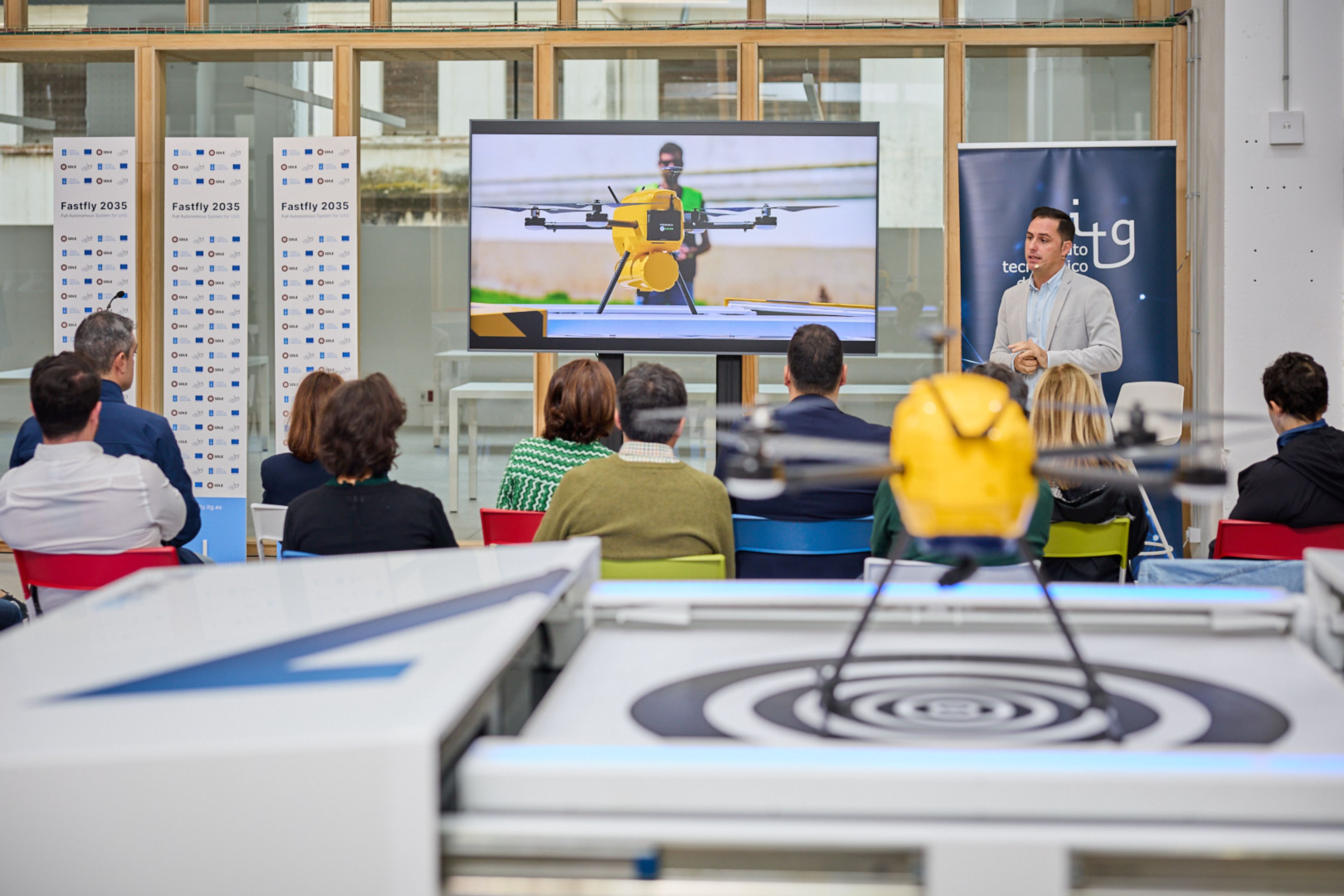
Latest information

Fastfly, Galicia's first joint research unit that specialises in drones
The alliance between ITG and Star Defence Logistics & Engineering contributes to increasing the safety and autonomy of UAVs in complex environments, over long distances and beyond the pilot's line of sight, helping to strengthen the international position of the Galician Aerospace Pole
The Armed Forces, Ministry of Defence, Telefónica, State Ports and logistics and infrastructure inspection or maintenance companies are some of the sectors that have already tested the artificial intelligence solution applications for the safety of drone operations developed by the Technological Institute of Galicia (Instituto Tecnológico de Galicia) (ITG) and Star Defence Logistics & Engineering. This has been through the UMI FlastFly 2035 (Full Autonomous Systems for UAS), promoted with the support of the Regional Government of Galicia through the Joint Research Units programme.
The ITG has developed artificial intelligence, robotics, electronics and communications to make drone operations automated, safe, integrated into the airspace and economically viable for operators. The work has been carried out by a team of 17 researchers and has created 10 new highly skilled jobs.
FlastFly 2035, which began in 2021, is the consolidation of the R&D work started in the IMU creation phase in 2017. In this second phase, in line with the European Aviation Safety Agency's (EASA) Roadmap 2035, both ITG and Star Defence Logistics & Engineering (SDLE) have focused primarily on three main areas: the development of systems for drone landing assistance; the intelligent management of the various drone energy sources and autonomous charging; and the automation of functions that complement command and control systems.
The IMU has also played a key role in the transfer of technology to the market, achieving several milestones such as the international patent application for Drone in a box technology, the introduction of Fastfly technology to European projects and the development of a solution to manage the daily activities of drone operators, Dronesuite.
As part of the initiative, various tests and demonstrations have been carried out in coordination with the Galician Aerospace Pole, helping to position the Galician Community as an international benchmark in the field of unmanned aircraft for civilian use.
Application in different sectors
The solution developed by Fastfly 2035 has aroused the interest of institutions and companies in various sectors. The Armed Forces and Telefónica have already had the opportunity to test its functionalities. In the first case, it was used in demonstrations and exercises carried out in the south of Spain, in a real-life environment, with the Navy and other agents such as Sasemar, DAVA or State Ports, for the real-time transmission of video and audio between sea and land. In the case of the telecommunications operator, the nest was integrated with Telefónica's 5G network. The Ministry of Defence, in collaboration with SENER, is applying the nest concept to the detection of anti-personnel mines with autonomous vehicles, as part of the COINCIDENTE programme.
In the last mile logistics sector, nest technology has been tested with real flights for parcel delivery in urban areas. The healthcare sector has also shown interest in its application in logistics and delivery, for example, by the A Coruña University Hospital Complex (Complejo Hospitalario Universitario de A Coruña) (Chuac) and CatSalut (Catalan health service).
In terms of port applications, demonstrations for perimeter control have recently been carried out at the ports of A Coruña and Ferrol.
The results of FlastFly 2035 have also been used in demonstrations of European benchmark projects in the field of Urban Air Mobility, such as AMULED and U-ELCOME, which involve international players from different sectors: the aeronautical industry, technology companies, operators, regulation and research, among others.